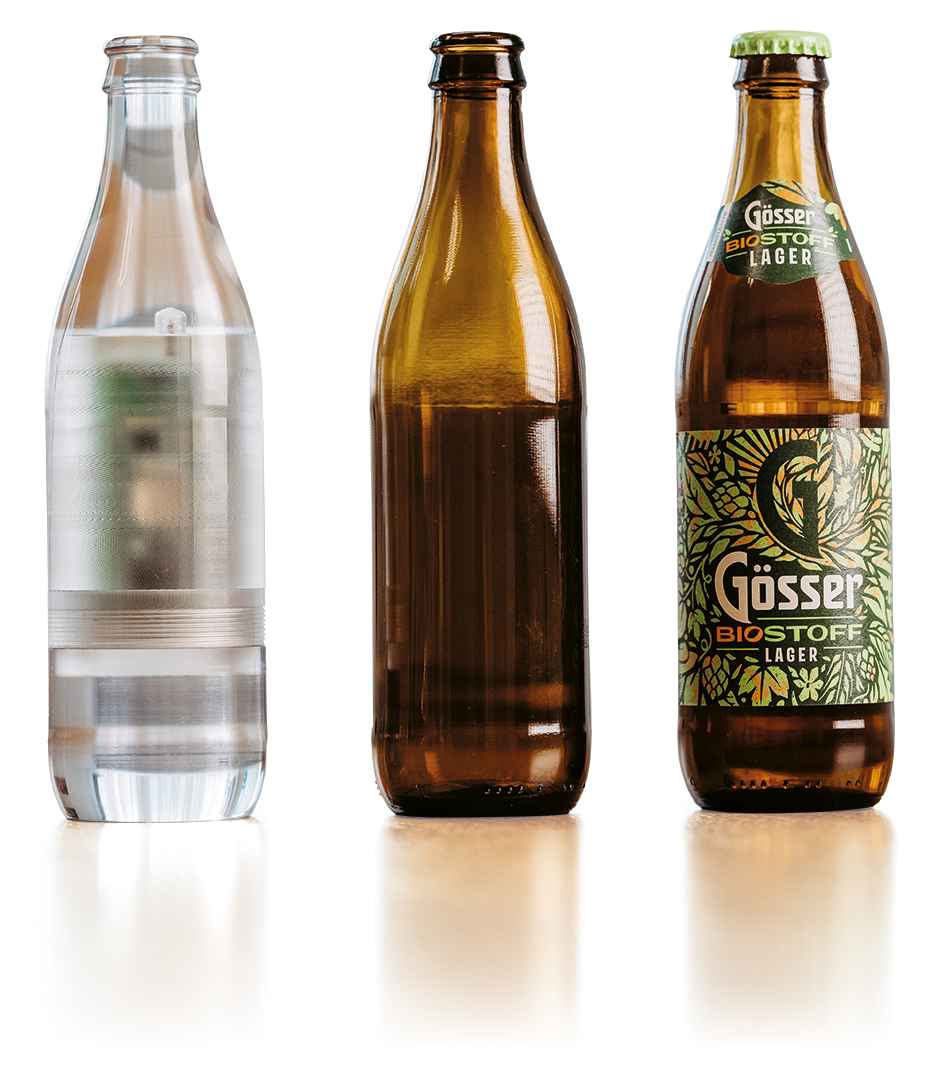
Images: Vetropack
Quality management
"We now have a measuring system"
Glass breakage on the filling line is the ultimate nightmare for companies in the food and beverage industry - and can pose a danger to end consumers.
The search for the source of a fault in the event of glass breakage is often lengthy and time-consuming. Glass packaging manufacturer Vetropack uses modern measurement technology to help not only quickly localise points of danger, but in the best case even prevent them. In this interview, Michael Waltl from the company's technical customer service explains how an inline sensor specifically identifies danger points and what developments are emerging in this area.
Mr Waltl, you use a sensor at various Vetropack customers. What's it all about?
Michael Waltl: That's right. We fit a dummy we manufacture with the ShockQC inline sensor from the Canadian company Masitek. This measures impact loads acting on a glass container with high precision. This enables us to determine directly in our customers' plants where filling lines or other packaging processes need to be optimised in order to prevent glass breakage.
How did you come to work with this methodology and the sensor from Masitek?
Waltl: I am responsible for technical customer service at Vetropack. This means that my team and I mainly deal with complaints, which in rare cases also relate to glass breakage. Wherever they occur, they represent an urgent problem for the customer. When we get to the bottom of the cause, it is an advantage to have a measuring system that allows us to quickly identify weak points on the filling line, as it is often not obvious to the naked eye where exactly the containers are damaged. We looked at two suppliers and quickly decided in favour of Masitek, as their product best suited our needs.
Presumably there are developments in the market that require such technologies more and more?
Waltl: Yes, you could say that. Firstly, lightweight glass bottles are becoming increasingly popular as an environmentally friendly packaging alternative, as they are more appealing to consumers and significantly save resources. This requires different settings on the filling line. Secondly, more products are being filled at high speed. Many filling lines have a speed of more than 50,000 bottles per hour. These high speeds lead to higher loads on the glass containers. Of course, filling lines have also changed completely over the years. With modern technologies, higher speeds are much more possible. Nevertheless, excessive loads sometimes occur.
You also use the sensor to help set up a line for a new product. Which customers have you already been able to help? The introduction of the Echovai lightweight glass bottle certainly plays a major role here?
Waltl: Of course. On the one hand, we take the sensor to customers who are filling a new product in a specific container for the first time. We use the sensor to identify areas on the line that need to be optimised. On the other hand, we go to customers where a specific problem has arisen. We have been using the sensor since 2020 and have so far visited ten to 12 companies with very different products. This has involved beer brewers such as Gösser, who have just launched their new organic beer in the Echovai lightweight glass standard bottle, but I've also been to companies in the food sector, for example. In one case it was about spice jars, in another about spreads.
How exactly does the sensor work? How should we visualise the process?
Waltl: We work with a "replica", i.e. a dummy made of plastic. Every glass item receives loads differently. Therefore, the respective glass product of our customers is replicated exactly. The replica is then calibrated at Masitek and fitted with the sensor. We have sensors in three different sizes. We take the replica to the customer and then let this dummy run over the line. The sensor measures exactly where forces are acting on the container, for example in the shoulder or base area. It also measures the level of the forces - in IPS (inches per second) - which tells us whether the minimum impact strength for a container produced by us has been exceeded. The measured data records are transmitted a full 100,000 times per second to a PC, where they are analysed.
Do you receive the replica from Masitek?
Waltl: No, with a few exceptions, the replicas are produced in our own training workshop. All cylindrical shapes are replicated there. We are only unable to produce non-round moulds ourselves. On the one hand, this saves us a lot of money, and on the other, it's good training for our apprentices.
Impact measurement is by far the most important parameter. It provides us with all the data we need to analyse.
Michael Waltl Technischen Kundendienst Vetropack

What feedback have you received from your customers so far?
Waltl: For our customers, the data measured with the dummy naturally represents valuable information - on the basis of which they can reduce or completely avoid glass breakage. Word of the tests with the inline sensor has now spread throughout the industry. This has also led to major customers approaching us. For example, I will soon be travelling to a beer bottler in the Czech Republic for a line audit with the aim of uncovering potential hazards.
How do you see the future of this technology? Is there still untapped potential here?
Waltl: Now, apart from the three sensor sizes mentioned above, another very small sensor is currently under development. This will be interesting, as it would make it possible to analyse very small containers at even higher speeds. Other topics include dynamic pressure and topload measurements. For example, some bottlers have accumulation tables where the articles are accumulated for various reasons. Certain sensors can measure the resulting dynamic pressure. Topload control is concerned with the question of how much axial force is exerted on the capping system when it is tested. But the impact measurement is by far the most important variable, and here we have all the data we need to analyse it.
The customer certainly benefits enormously from this enhanced technical customer service.
Waltl: Exactly. With the ShockQS inline sensor from Masitek, we now have a measuring system that accurately identifies danger points. That's a big difference compared to before and a huge help for us - and therefore also for our customers. (hw)